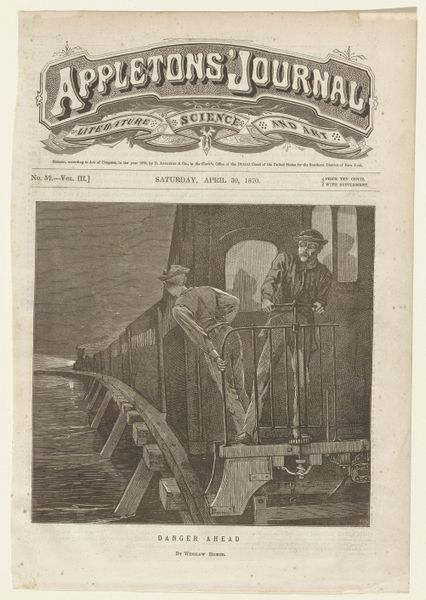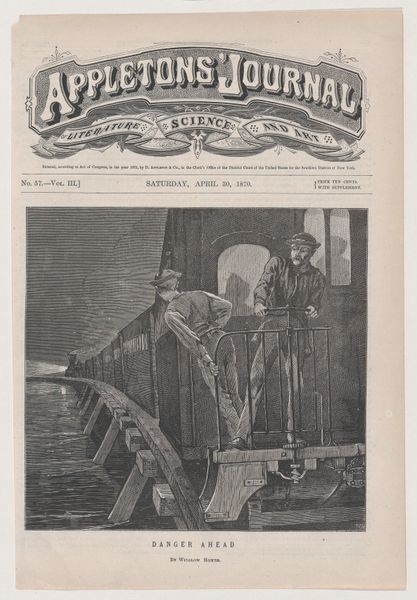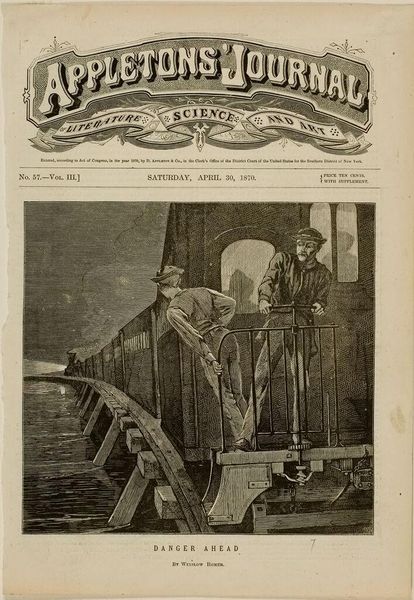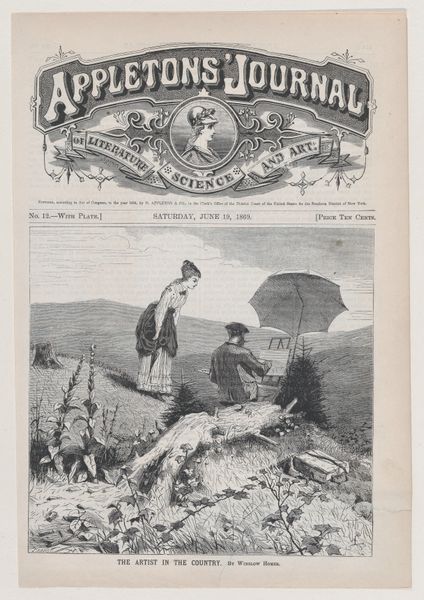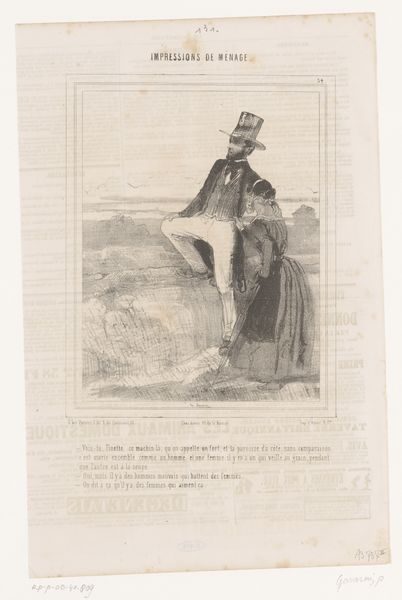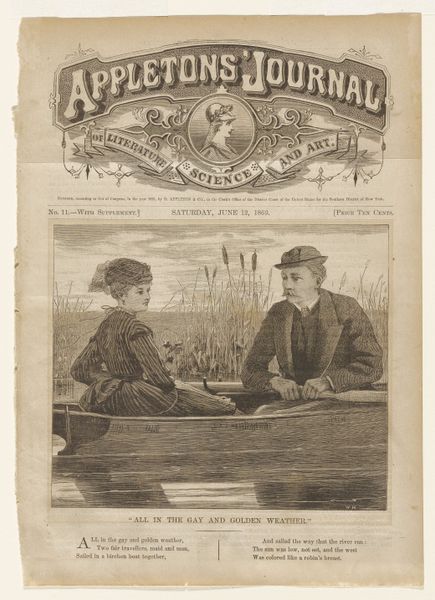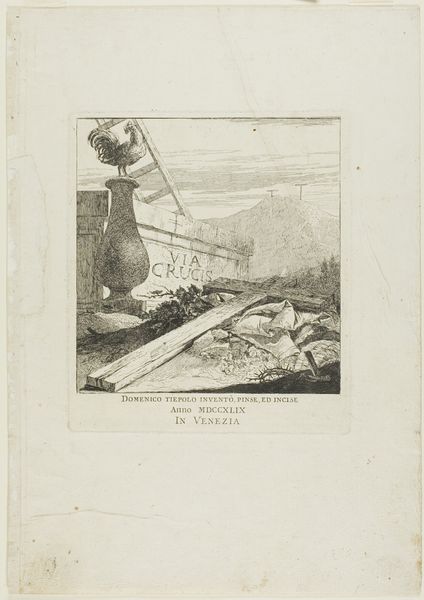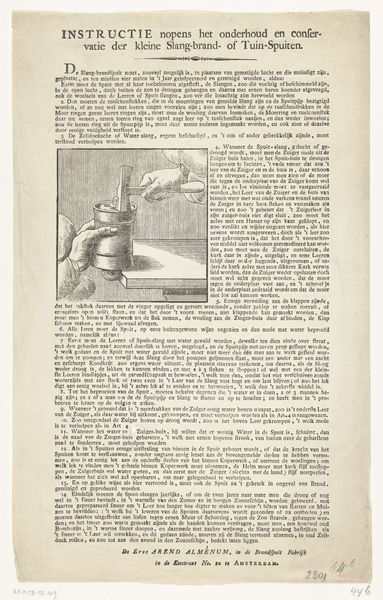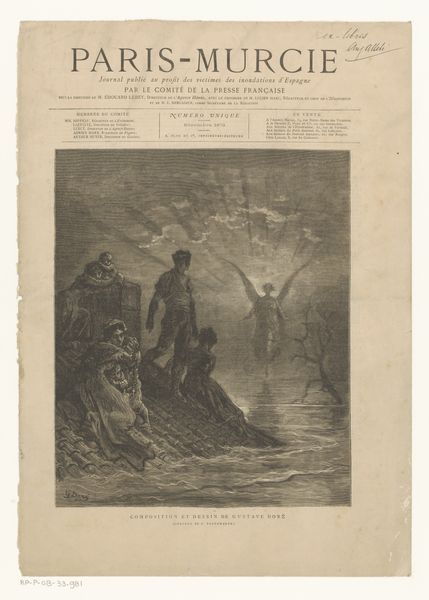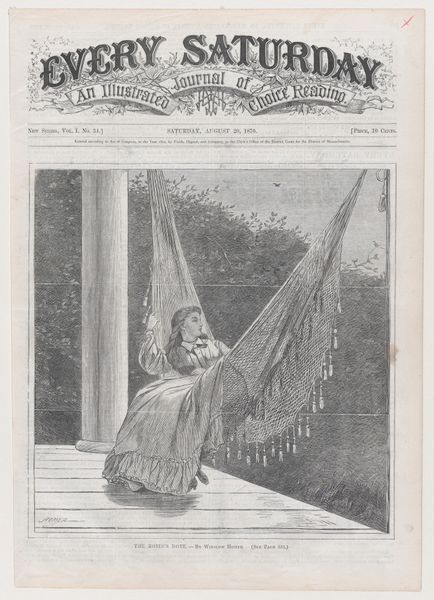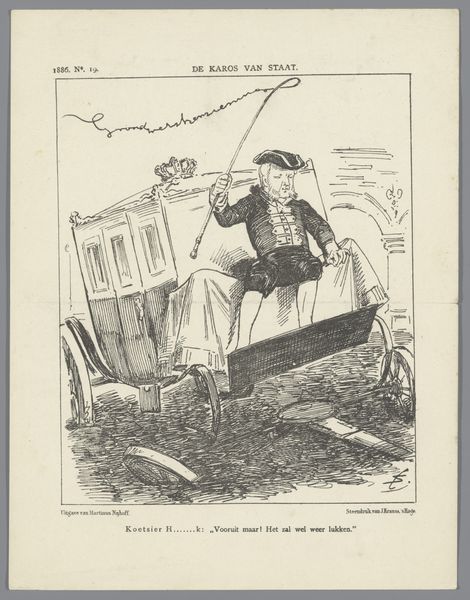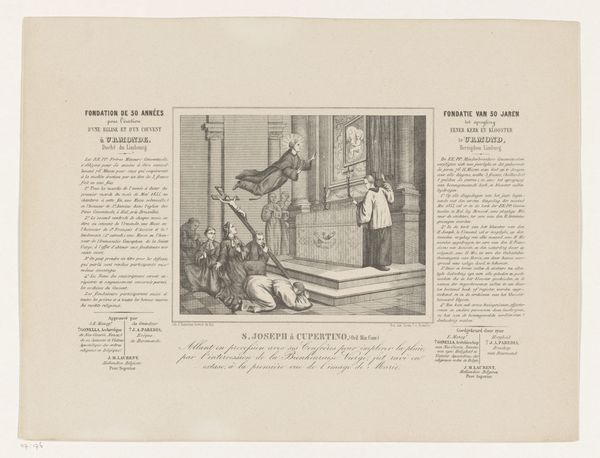
print, woodblock-print, woodcut, wood-engraving
#
narrative-art
# print
#
landscape
#
woodblock-print
#
woodcut
#
19th century
#
united-states
#
genre-painting
#
wood-engraving
Dimensions: 6 1/8 x 6 7/16 in. (15.56 x 16.35 cm) (image)10 7/8 x 8 in. (27.62 x 20.32 cm) (sheet)
Copyright: Public Domain
Curator: Winslow Homer’s wood engraving, “Danger Ahead,” published in 1870, presents an arresting scene of two men on a train perilously crossing a narrow trestle. Editor: It's immediately unsettling. The monochrome intensifies the inherent tension. The eye is drawn right to that chasm they’re about to cross. Curator: Homer made this piece for _Appleton's Journal_, showcasing how printmaking democratized art and brought visuals to a wide audience. Consider the wood engraving process; carving into the block demands precision and labor, quite distinct from painting’s direct application. Editor: That's crucial to understanding its accessibility. And situating it historically, post-Civil War, this imagery touches on broader themes of reconstruction, industrial progress and, crucially, labor anxieties, which become gendered through discourses of race, class and labor exploitation in the context of post-bellum United States. Curator: Absolutely. Homer understood the narrative power of the medium. Look at the textures he creates – the dense lines implying depth and the variations conveying material, from metal to water to wood. How the composition works to underscore the industrial aspect in relation to this uncertain prospect that is quite palpable. Editor: That stark contrast heightens the drama. It provokes thinking of whose bodies and labor were used up in pursuit of manifest destiny, particularly during this era of rapid railroad expansion in the United States, the environmental degradation resulting from it, and the social costs. Curator: Considering the context of mass-produced imagery shifts focus towards production rather than aura. Art's democratization carries cultural weight, as print multiplies exposure, potentially shaping perceptions. Editor: Yes, this isn't just aesthetic, but sociopolitical work too. Visual representations reproduce and normalize hegemonic power, thus the engraving, as much as the railway infrastructure itself, becomes deeply implicated within and inextricable from 19th century U.S. capitalism. Curator: Thinking of its physical creation emphasizes how meaning materializes via industrial process. The engraving bears signs of artistic labor and capitalistic dissemination, both enmeshed. Editor: It encourages me to look deeper at how these materials mediated the social narratives of that era, prompting a nuanced engagement between artistic production and lived experiences. Curator: For me, the appeal comes from exploring that convergence of skill, material and broad access—art entering everyday life with a different kind of directness. Editor: And to remember that art never exists in a vacuum; instead, this prompts reflection about social forces that shape and inform every aesthetic gesture.
Comments
No comments
Be the first to comment and join the conversation on the ultimate creative platform.
